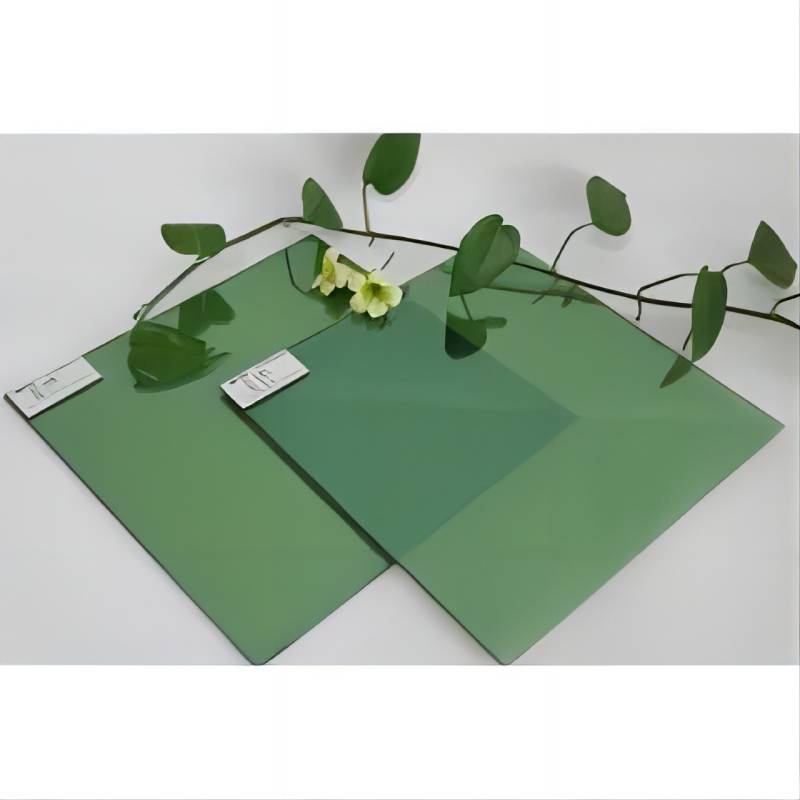The Float Glass Production Process
Float glass, a type of flat glass, is widely used in various applications such as windows, facades, and displays. Its production process is remarkable for its efficiency and precision, allowing for the creation of high-quality glass sheets. This article will explore the key steps involved in the float glass production process.
Raw Materials
The production of float glass begins with the selection of raw materials, primarily silica sand, soda ash, and limestone. Silica sand serves as the main component, providing the necessary silica content. Soda ash acts as a flux, lowering the melting temperature of the silica, while limestone contributes to the stability and durability of the final product. Sometimes, additional materials, such as alumina, may be added to enhance specific properties of the glass.
Melting
The raw materials are mixed together and then fed into a melting furnace, where they are heated to temperatures around 1,600 to 1,700 degrees Celsius (2,912 to 3,092 degrees Fahrenheit). In the furnace, the raw materials undergo a chemical transformation, melting into a homogeneous molten glass. The melting process is critical; it determines the quality of the glass by ensuring that all materials are thoroughly melted and any impurities are removed.
Float Process
Once the glass reaches a molten state, the float process begins. The molten glass is poured onto a bed of molten tin in a large, controlled environment, typically referred to as the float bath. Tin is used because it provides a smooth, flat surface for the glass to float on, preventing contamination and distortion. As the molten glass floats on the tin, it spreads out and forms a continuous sheet of uniform thickness. This process is crucial for producing flat glass without any surface imperfections.
float glass production process
Annealing
After the float process, the glass sheet enters an annealing lehr, a long, temperature-controlled chamber. Here, the glass is gradually cooled to relieve internal stresses that developed during the melting and forming process. Controlled cooling is essential to prevent the glass from cracking or shattering due to thermal shock. The annealing process can take several hours, ensuring that the glass is stable and ready for further processing.
Cutting and Finishing
Upon exiting the annealing lehr, the continuous glass ribbon is cut into varying sizes depending on market requirements. This is typically done using high-precision cutting equipment that ensures clean edges. After cutting, the glass may undergo additional finishing processes, such as polishing, coating, or laminating, depending on its intended application. For instance, low-emissivity (Low-E) coatings are often applied to enhance energy efficiency in windows.
Quality Control
Quality control is an integral part of the float glass production process. Throughout production, various tests are conducted to assess the optical quality, thickness, and chemical composition of the glass. These quality checks ensure that the final product meets industry standards and customer specifications. Any defects detected at this stage can be corrected or the affected glass can be recycled.
Conclusion
The float glass production process is a sophisticated blend of materials science, engineering, and technology. By carefully controlling each step—from raw material selection to annealing and quality control—manufacturers are able to produce high-quality float glass that meets diverse consumer needs. With ongoing advancements in glass technology, the future of float glass production looks promising, offering even greater efficiency and sustainability in the manufacturing process. As demand for high-performance glass continues to rise, the float glass industry will play a pivotal role in various sectors, including construction, automotive, and electronics.
 Afrikaans
Afrikaans  Albanian
Albanian  Amharic
Amharic  Arabic
Arabic  Armenian
Armenian  Azerbaijani
Azerbaijani  Basque
Basque  Belarusian
Belarusian  Bengali
Bengali  Bosnian
Bosnian  Bulgarian
Bulgarian  Catalan
Catalan  Cebuano
Cebuano  Corsican
Corsican  Croatian
Croatian  Czech
Czech  Danish
Danish  Dutch
Dutch  English
English  Esperanto
Esperanto  Estonian
Estonian  Finnish
Finnish  French
French  Frisian
Frisian  Galician
Galician  Georgian
Georgian  German
German  Greek
Greek  Gujarati
Gujarati  Haitian Creole
Haitian Creole  hausa
hausa  hawaiian
hawaiian  Hebrew
Hebrew  Hindi
Hindi  Miao
Miao  Hungarian
Hungarian  Icelandic
Icelandic  igbo
igbo  Indonesian
Indonesian  irish
irish  Italian
Italian  Japanese
Japanese  Javanese
Javanese  Kannada
Kannada  kazakh
kazakh  Khmer
Khmer  Rwandese
Rwandese  Korean
Korean  Kurdish
Kurdish  Kyrgyz
Kyrgyz  Lao
Lao  Latin
Latin  Latvian
Latvian  Lithuanian
Lithuanian  Luxembourgish
Luxembourgish  Macedonian
Macedonian  Malgashi
Malgashi  Malay
Malay  Malayalam
Malayalam  Maltese
Maltese  Maori
Maori  Marathi
Marathi  Mongolian
Mongolian  Myanmar
Myanmar  Nepali
Nepali  Norwegian
Norwegian  Norwegian
Norwegian  Occitan
Occitan  Pashto
Pashto  Persian
Persian  Polish
Polish  Portuguese
Portuguese  Punjabi
Punjabi  Romanian
Romanian  Russian
Russian  Samoan
Samoan  Scottish Gaelic
Scottish Gaelic  Serbian
Serbian  Sesotho
Sesotho  Shona
Shona  Sindhi
Sindhi  Sinhala
Sinhala  Slovak
Slovak  Slovenian
Slovenian  Somali
Somali  Spanish
Spanish  Sundanese
Sundanese  Swahili
Swahili  Swedish
Swedish  Tagalog
Tagalog  Tajik
Tajik  Tamil
Tamil  Tatar
Tatar  Telugu
Telugu  Thai
Thai  Turkish
Turkish  Turkmen
Turkmen  Ukrainian
Ukrainian  Urdu
Urdu  Uighur
Uighur  Uzbek
Uzbek  Vietnamese
Vietnamese  Welsh
Welsh  Bantu
Bantu  Yiddish
Yiddish  Yoruba
Yoruba  Zulu
Zulu 

